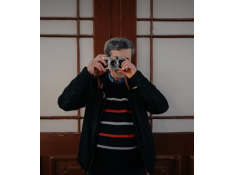German Camera Brands: Past and Present
Friday 16 May 2025
 6.6k
6.6k
 Reproduction without the author's authorization is prohibited
Reproduction without the author's authorization is prohibited
Germany has long been regarded as a world leader in precision engineering, and nowhere is this more evident than in its photographic heritage. The history of German camera brands is rich with innovation, design excellence, and technological breakthroughs that have helped shape photography as we know it. From iconic rangefinders to beloved folding cameras, German manufacturers set the standard in many categories. Some of these brands continue to innovate today, while others have left behind legacies that live on through collectors and enthusiasts.
This article explores both the still-active and historical German camera brands that have contributed significantly to the evolution of photography.
German Camera Brands Still Active

Leica
When discussing German camera brands, Leica inevitably leads the conversation. Originating from the Ernst Leitz company in Wetzlar, Leica introduced the world’s first commercially successful 35mm still camera in 1925: the Leica I. Designed by Oskar Barnack, this camera made photography truly portable and changed the way people documented the world.
Leica is revered for its M-series rangefinders, known for their timeless design and optical precision. Even in the digital era, Leica has managed to stay relevant with cameras like the Q-series and the SL mirrorless system, all while maintaining its commitment to mechanical excellence and German craftsmanship.
Leica remains headquartered in Wetzlar, Germany, and continues to assemble its cameras domestically. It also maintains a strong presence in both digital and analog photography, with a loyal following among professionals, street photographers, and collectors.

Linhof
Linhof Präzisions-Systemtechnik GmbH, founded in 1887 in Munich, is one of the oldest camera manufacturers still in operation. The company is best known for its Technika series, the world's first all-metal folding field cameras introduced in 1934. Linhof continues to produce high-quality large format cameras, catering to professionals in studio, architectural, and landscape photography.

Rollei
Rollei GmbH & Co. KG, originally founded as Franke & Heidecke in 1920, is renowned for its Rolleiflex twin-lens reflex cameras. The company has undergone several transformations and, as of 2015, markets digital consumer cameras and accessories under the "Rollei" label in Europe.

Arri
Arri (Arnold & Richter Cine Technik), established in 1917 in Munich, is a leading manufacturer of motion picture film equipment. The company produces professional motion picture cameras, lenses, lighting, and post-production equipment. Arri's Alexa camera system has been used to shoot several films that won the Academy Award for Best Cinematography.
German Camera Brands Now Defunct or Historical

Zeiss Ikon
One of the most influential German camera manufacturers of the 20th century, Zeiss Ikon was established in 1926 through a merger of four Dresden-based companies: ICA, Contessa-Nettel, Ernemann, and Goerz. Backed by Carl Zeiss, this new entity became a powerhouse of camera innovation.
Zeiss Ikon produced several legendary models, including the Contax rangefinder, which competed directly with Leica. They also made popular medium format and folding cameras such as the Ikonta and Super Ikonta. These cameras were renowned for their build quality and the superb Carl Zeiss lenses that accompanied them.
World War II and the subsequent division of Germany severely disrupted operations. The brand persisted under East German state control but eventually declined. A short-lived revival in the 2000s saw the release of the Zeiss Ikon ZM rangefinder (produced in cooperation with Cosina), but it was discontinued by 2012.
Though no longer making cameras, the Zeiss name lives on through Carl Zeiss AG, which remains a leader in optical lens manufacturing across various industries.

Agfa
Founded in 1867, Agfa (Aktien-Gesellschaft für Anilinfabrikation) started as a chemical company but soon became a household name in photography. In the early to mid-20th century, Agfa manufactured both film and cameras, catering especially to the amateur market.
The Agfa Optima, launched in 1959, was one of the first 35mm cameras with fully automatic exposure — a major milestone in camera automation. Agfa also produced the popular Silette series, compact viewfinder cameras with clean design and reliable performance.
While never positioned as a premium brand like Leica, Agfa cameras were affordable, easy to use, and widely distributed, making them a favorite among hobbyists. However, competition from Japanese manufacturers and the onset of digital photography led Agfa to eventually exit the camera business.
Today, Agfa-Gevaert continues to operate, but its focus has shifted entirely to imaging systems for medical and industrial applications.

Balda
Balda-Werk was founded in 1908 in Dresden and became known for its production of folding cameras and later compact 35mm cameras. In the postwar period, Balda relocated to West Germany and continued making consumer-friendly models like the Baldina and Baldessa.
These cameras, though never considered high-end, offered reliable performance and solid German engineering for amateur photographers. Balda was especially successful during the 1950s and 1960s, when demand for compact film cameras surged.
By the 1980s, however, Balda struggled to compete with Japanese automation and innovation. The company transitioned to making components for consumer electronics and eventually exited the camera industry entirely. The Balda brand remains a nostalgic favorite among collectors of vintage European cameras.

Beier
A lesser-known yet historically interesting brand, Beier was established in 1923 in Freital, near Dresden. The company initially made plate and folding cameras before branching into compact viewfinder and scale-focus cameras during the mid-20th century.
Beier cameras were primarily targeted at the mass market in pre- and post-war Germany. Like many other East German manufacturers, Beier was nationalized and eventually absorbed into larger industrial combines during the GDR era.
While it never gained international fame, Beier played a role in providing accessible photographic tools for everyday use, especially behind the Iron Curtain. Its cameras, such as the Beier Beirette, are now considered interesting historical artifacts from the Cold War photography era.
Conclusion
The history of German camera brands is one of innovation, resilience, and artistic influence. These manufacturers not only shaped the tools of photography but also transformed how people captured and remembered their lives. Brands like Leica continue to push boundaries with cutting-edge technology while preserving analog traditions. Others, like Zeiss Ikon, Agfa, Balda, and Beier, remain cherished names in the legacy of camera design and manufacturing.
Even though many of these brands are no longer active in the camera market, their contributions are still felt — in the cameras we collect, the optical standards we trust, and the aesthetic values that influence modern imaging.
For anyone passionate about photography, the story of German camera brands is not just a tale of machines and mechanics — it’s a chronicle of creativity, craftsmanship, and cultural impact that continues to inspire generations.
Statement: all contents and remarks made by K&F CONCEPT 's intranet friends only represent themselves and do not reflect any K&F CONCEPT 's opinions and views.
-
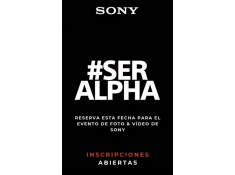 Sony to hold Be Alpha event on October 16th, possibly unveiling the A7M5Saturday 04 October 2025
Sony to hold Be Alpha event on October 16th, possibly unveiling the A7M5Saturday 04 October 2025 -
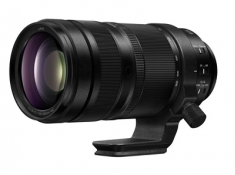 Panasonic Releases the LUMIX S 100-500mm F5-7.1 0.1.S. LensFriday 26 September 2025
Panasonic Releases the LUMIX S 100-500mm F5-7.1 0.1.S. LensFriday 26 September 2025 -
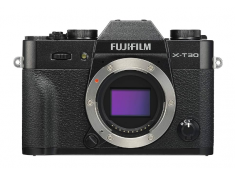 Fujifilm X-T30III may be released in OctoberThursday 25 September 2025
Fujifilm X-T30III may be released in OctoberThursday 25 September 2025 -
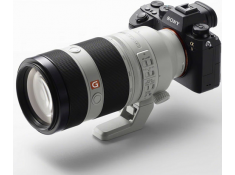 Sony FE 100-400mm GM OSSI II lens is coming soonTuesday 23 September 2025
Sony FE 100-400mm GM OSSI II lens is coming soonTuesday 23 September 2025 -
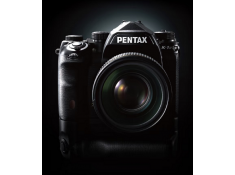 Pentax K-1 Mark II DSLR to be released soonTuesday 23 September 2025
Pentax K-1 Mark II DSLR to be released soonTuesday 23 September 2025





